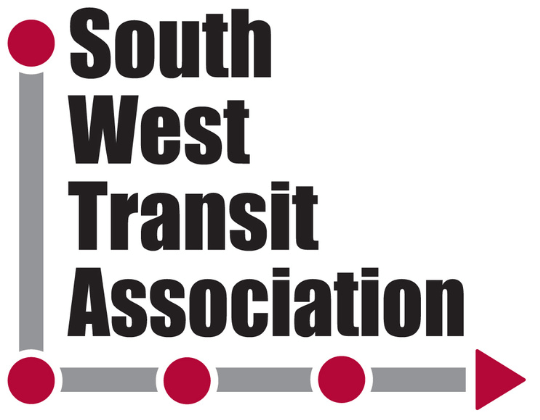Vanpooling is an extremely flexible transportation option for employers and their employees. The vans themselves don’t need additional infrastructure to operate so they can be routed to pick up and drop off commuters where it makes the most sense for them. Vanpools can provide a one-seat ride as well as integrate with existing transportation networks.
The MagicBus platform makes it easy to identify new commuting patterns, build routes for those commuters, and optimize pools as your vanpool program evolves. Here’s some of the ways you can plan and deploy your vanpool routes with MagicBus.
Direct One Seat Ride
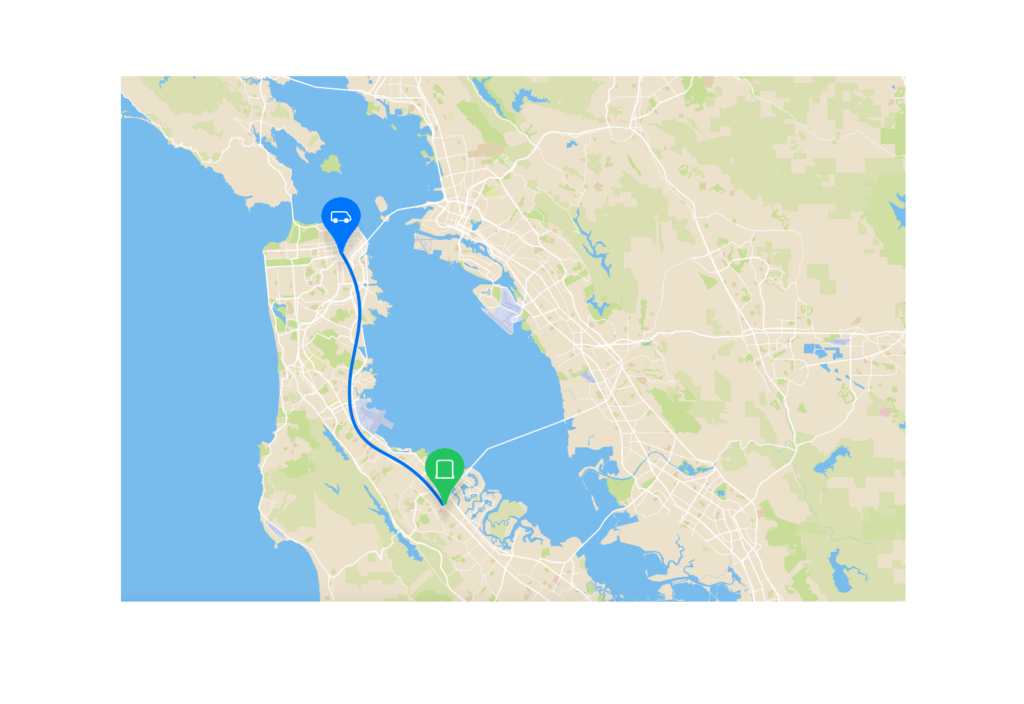
Riders meet the vanpool in San Francisco and share the commute to their office in San Mateo
Most vanpool routes provide direct service from a pickup point in the morning to an office and then return to that pickup point in the evening. Usually the van itself stays at the office with the driver (who is typically an employee).
Direct service means that riders won’t have to wait at intermediate stops or encounter any additional delays when picking up or dropping off other riders. The vanpool route can take advantage of carpool lanes, toll roads, and other traffic-avoiding methods while still ensuring that riders will get to the office. The uninterrupted ride also allows riders to read and get work done without worrying about traffic.
Direct service relies on having enough riders near a common pickup point to meet ridership minimums. Typically riders would live within walking distance of one another and meet at a central convenient pickup point. Riders may also take another mode of transportation to the pickup point to finish their trip on the vanpool (e.g. driving to park-and-ride or taking a subway to a vanpool pickup point).
Benefits
- Fast direct one-seat ride from pickup to the office
- Custom commute for vanpool riders
Limitations
- Must find enough riders close to common pickup point to meet vanpool minimums
- Van may be under-utilized while waiting at office
Multiple Pickups
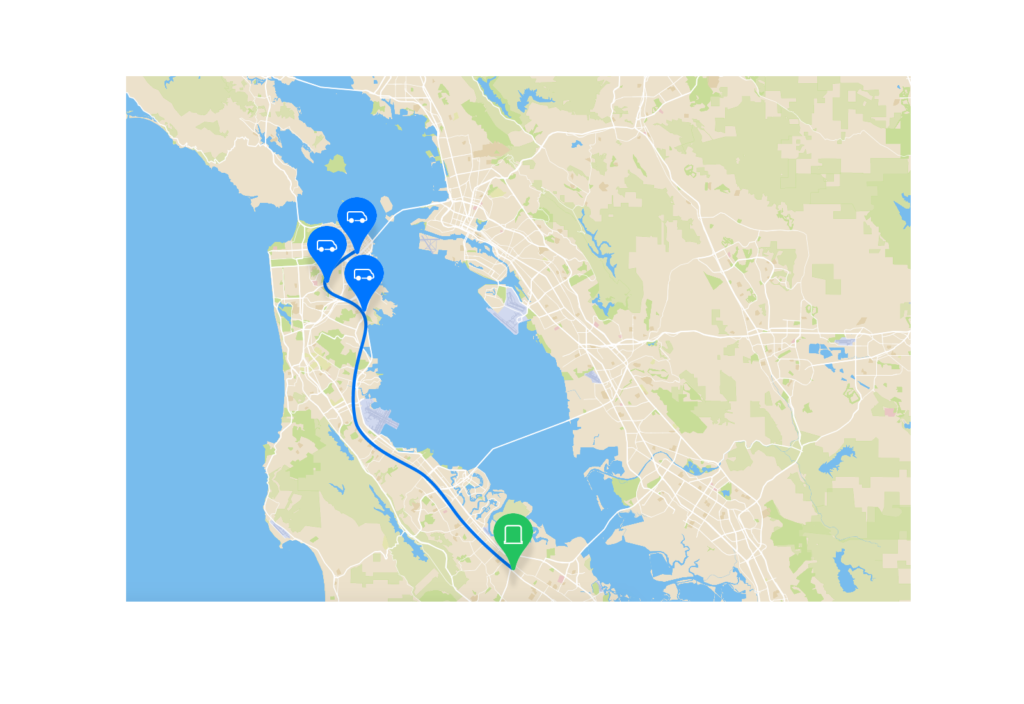
Riders get picked up from various points in San Francisco for their commute to Palo Alto
Mutiple pickup vanpool routes will stop at more than one pickup before traveling to the office and returning to those pickups in the evening. Vans will typically still wait at the office during the work day for the return trip home.
Multiple pickup vanpool routes can attract more riders to each route at the expense of longer travel times and waiting at each intermediate stop. A single vehicle can serve riders in a larger geographic area or pick up riders along a corridor for their commute into the office.
Multiple pickup vanpools can serve riders that are far from the office but may not live close enough together for a common pickup. Ideally the van can quickly pickup riders for a longer uninterrupted commute into the office. Riders may still have to wait at each pickup but can still enjoy a mostly uninterrupted ride.
Another option for multiple pickup vanpool routes is to service commuters along a corridor. Overall ride times may be longer to accommodate every stop and riders could be interrupted more often when picking up or dropping off at intermediate stops.
Multiple pickup vanpool routes can still provide a faster one-seat ride compared to other modes while attracting enough riders to meet vanpool and vehicle minimums. Additional pickups and related delays can impact on-time arrival while also inconveniencing riders that are already on the van. Multiple pickup vanpools can be a great way to get started with vanpooling and can always be expanded and split into one-stop/direct service once enough riders are available.
Benefits
- Can serve multiple riders that are spread out geographically (e.g. multiple pickups in a less-populated region for a shared commute into a city)
- Easier to meet vanpool minimums by picking up multiple riders in different areas
- Great way to explore viability and find new opportunities to break segments off for direct service
Limitations
- Longer commute time due to indirect routing, additional stops, and any related delays
- Route may change as riders join or leave pool
- Van may be under-utilized while waiting at office
Multistop Pickup & Dropoff
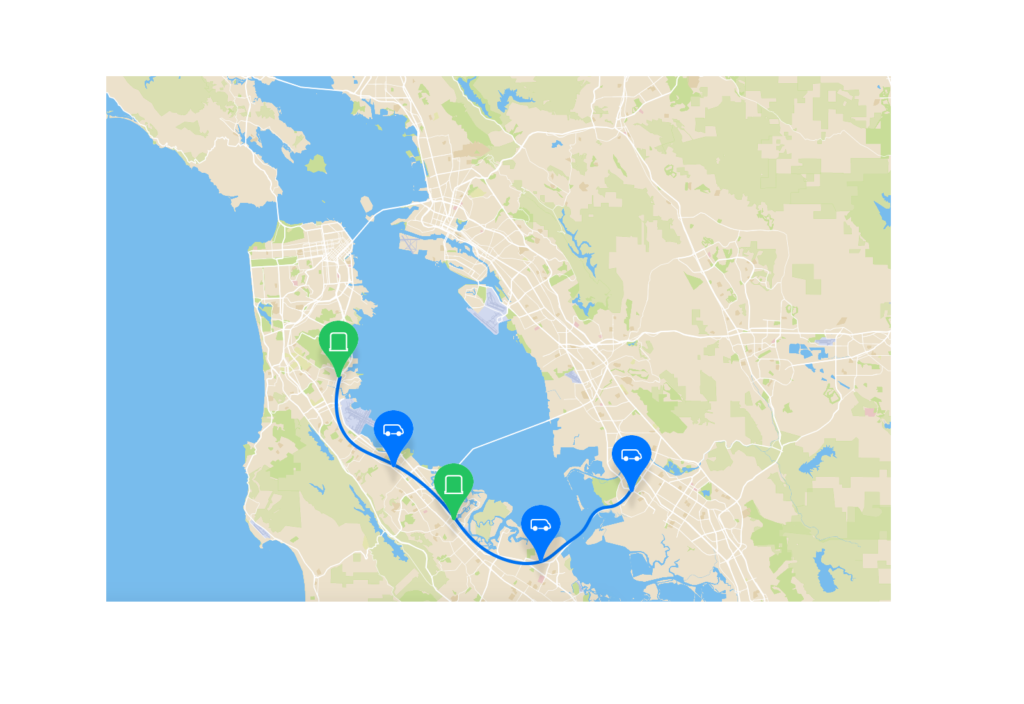
Riders can get on the vanpool at any stop to go to offices in Palo Alto or Burlingame
A multistop vanpool route allows riders to get on or off at any stop along the route. This type of service is similar to mass transit bus routing or shuttle services and may run throughout the day instead of morning/evening round trips.
Multistop service can be beneficial to employers that have multiple locations that are close enough for vanpool service. Riders can use the multistop vanpool route to get to the office as well as transit between the offices during the day if needed. Riders can also get off at different stops on their trip home when needed to run errands.
Multistop service will likely run slower and follow less-direct routing to serve multiple pickup/dropoff points as well as the various offices it is also stopping at. Ideally multistop vanpool routes can increase vehicle utilization by serving more riders per trip or reaching a more disbursed workforce.
Benefits
- Riders can make use of any pickup or dropoff point
- Multistop routes can run more than twice a day with the same vehicle – providing higher vehicle utilization and mid-day scheduling options
- Multistop routes can serve multiple offices to enable employees to easily move between them during the day or commute to different offices throughout the week
Limitations
- Service is slower and may follow a less-direct route
- Vanpool minimums may still be hard to meet if routes don’t serve enough riders
- Vans may travel empty between stops
Feeder/Connecting Service
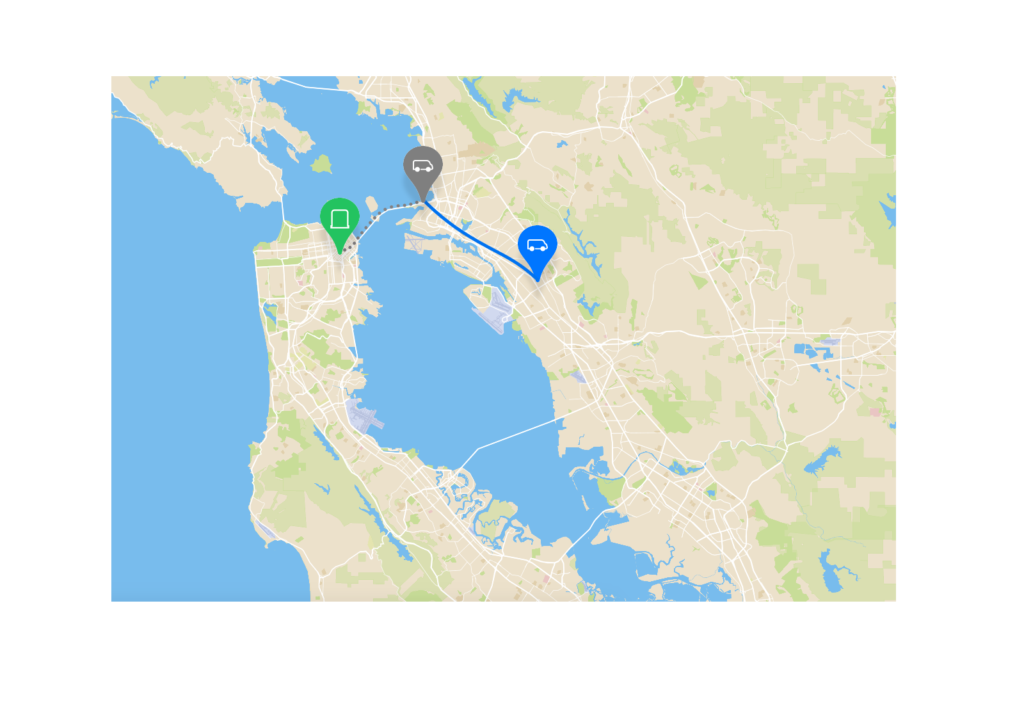
Riders take a vanpool through Oakland and transfer to BART to continue into San Francisco
Vanpool routes can also connect to and integrate with existing transportation networks and services. While connecting services may be slower they can extend the reach of existing transportation networks, add off-peak options, and connect with existing company shuttles.
Feeder/connecting services can be beneficial to riders that may not have other options. Riders that don’t have cars may not be able to reach existing transportation networks or may be unable to find a bus that runs on their schedule. Riders can vanpool from their home to a bus, train, or transit terminal and complete their trip with a different mode.
Drivers may also be able to integrate vanpooling in their commute by driving to a park-and-ride or similar meeting point and completing their trip to the office via vanpool.
Feeder/connecting services will not be the fastest option for commuters but they offer additional scheduling flexibility that fixed routes don’t and can fill gaps when riders or offices aren’t located near existing transit networks.
Benefits
- Expand existing transportation options
- Provide off-peak and late night transportation
- Enable car-free commuting when no other options are available
Limitations
- Multiple connections and wait times will increase overall commute times
- Van may need to be parked at point of connection
Planning Your Vanpool Routes
The MagicBus platform gives TMAs, non-profits, and organizations the tools they need to discover and plan new vanpool routes and expand on those they already have. Vanpool routing can be impacted by rider needs, geographic limitations, and company offices but the MagicBus platform enables organizations to create the routes they need to serve their employees.
Reach out to the MagicBus team to learn more about vanpool routing options and starting or improving your vanpool program today.

